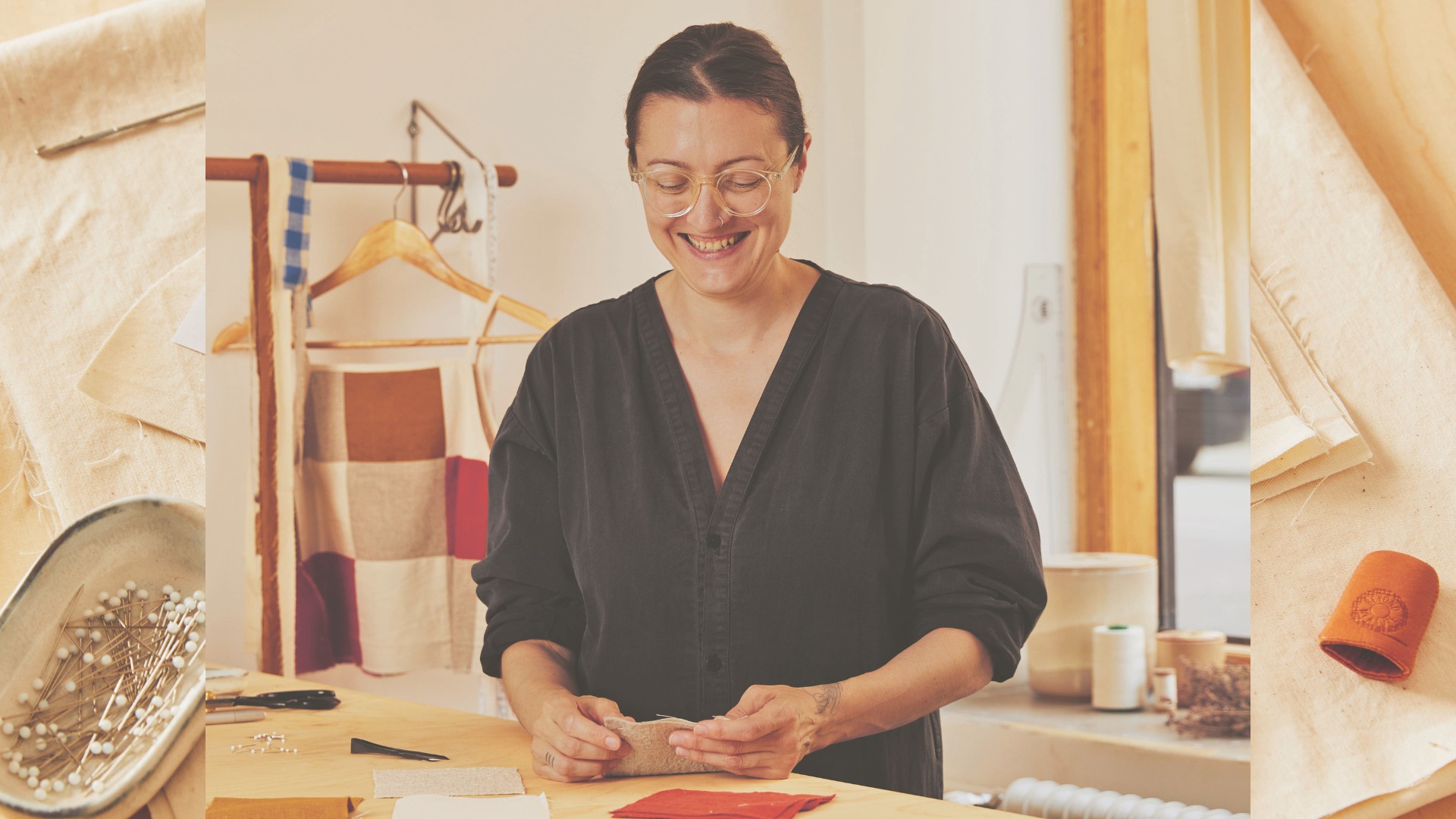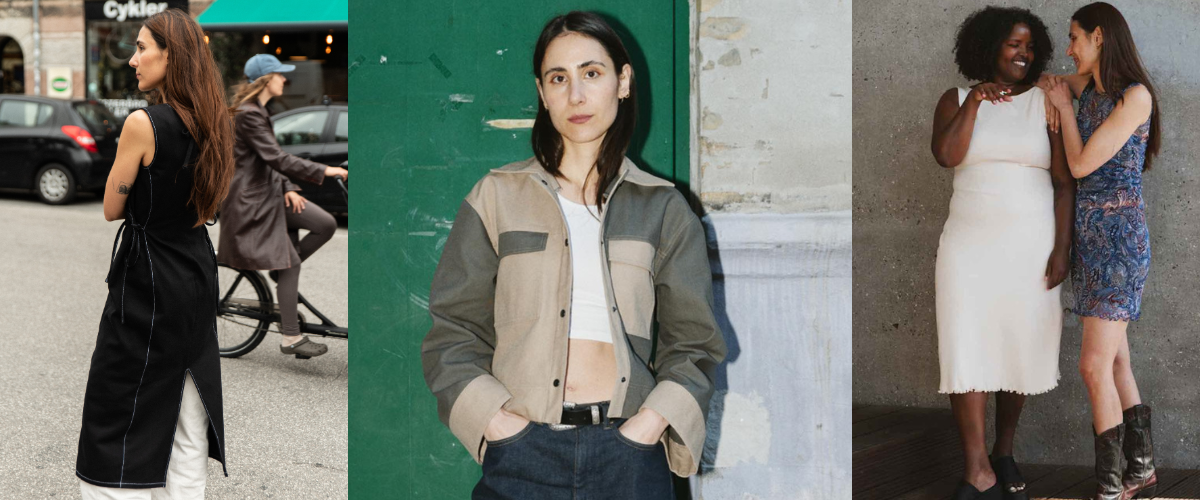Got a wee guest blog for you today all about organising your sewing room! Check out Annabelle Short’s 10 top tips out below. What do you think and what would you add?
Organising the sewing room is very important for a sewing expert. When things are arranged accordingly, not only does it make your work easier, it also shows that you know what you are doing. In this post, I will show you ten ways you can arrange the sewing room that’ll give you a professional edge above others who tend to wallow in the disarray of their sewing tools.
Apart from the fact that having your tools scattered here and there doesn’t portray you as an expert, it is also quite risky. You might step on a sewing pin that is not supposed to be where it is. Also, as a professional, you need to acquaint yourself with your sewing labels and tags and how you can organize them. Therefore, below are the tips you need to stand out as an expert in your sewing profession.
Store your sewing tools properly
First and foremost store all your quilting tools close to your work area. This is very important because these are the tools you frequently use whenever you work. For instance, your quilting rulers should be kept together in one place, like hanging them on a bar near your cutting table.
Close observation of patterns
Carefully observe how you use your patterns. There may be some patterns you frequently use. These favourite patterns, however, should be kept in a 3 ring binder to keep them organised and easy to find. Paper patterns, for example, can be organised in a mini binder by using small page protectors to easily see both the front and back covers as you flip through them.
Securely backup your patterns and designs
There are thousands of patterns to be used. For future use and easy access, always save a backup of your PDF/Epub patterns on your hard drives or Clouds. You can quickly get to them and print any kind of pattern you want to use. After printing, however, you should store the hard copies in cardboard magazine holders. It would be very unprofessional just to leave them lying around.
Maintain a minimalist workspace arrangement
Every once in a while, probably yearly, try to sort through all your quilting magazines and books. To avoid littering your holders, give out the ones you think you don’t need anymore. Local quilting guides are perfect places to donate the quilts you don’t need. I wouldn’t advise you throw them into the trash or incinerator for there might be people seriously in need of those books. It is noble to give them out to people who want them. You never can tell; you may even find what you need in these local quilting guides.
Keep only parts of a magazine you need
There are some situations where you would like some particular magazine patterns but do not want the whole magazine. What you have to do in this situation is very easy; just cut out the parts you want and put them in page protectors in a 3 ring binder. Simple.
Store your fabrics according to the frequency of usage
In fabric storage, always store your fabrics according to how often you use them. This solely depends on your style of usage. Some experts reach for certain designers first while some others try to work within a specific style. Just store your fabric in a manner you find comfortable whenever you work with it.
Keep your buttons sorted and organised
Sort your buttons in two ways. You can separate them either by their sizes or colours. For instance, you can store bigger buttons in 5-inch jars and smaller ones (including other trinkets) in 3-inch jars.
Keep your threads and other tools handy
In creating your sewing station, put folded and spools of lace on the shelves close to the thread rack. This will allow you easy access to your thread and your materials. Also, set your sewing machine in a position where you would not have to be rising up much whenever you need to make use of a material or tool. You can set your station in the middle of the room where you can have easy access to thing around.
Sort your stored scraps
Like the buttons, scraps can also be stored based on color and size. Saving your scraps in scrap bins is easy. When you want to sort through your scrap project, you will quickly know which bin to carry out and sort through. Sorting through them is fun itself as you can effortlessly make a colorful mess in the course of searching for a particular size (or color) and just stuff everything back into the bins, close the lids and put them back in their shelves after finding the perfect scraps for your projects.
Keep accurate records
Lastly, always keep track of your tools, materials, and projects. You can have a book to input all the stuff you have; and as you use them, you keep a record of your usage. This will allow you to know which particular tool or material is getting exhausted and you can easily restock those ones you think have been expended. Keeping records of your sewing and allied activities is very important.
About the author: Anna Carter Short is a freelance writer and a seamstress of more than 5 years. She is a craft lover and would like to start an Etsy store soon. Annabelle is a mother and she loves making crafts with her two children, Leo (age 9) and Michelle (age 11). When not working, she’s spending time with her family or putting pen to paper for her own personal pursuits. You can check here blog here: https://wunderlabel.co.uk/blog/
Other news
Meet the Maker: Birgitta Helmersson
Get to know the zero waste master a bit better with us! Birgitta Helmersson is a Swedish-Australian designer currently based […]
PUFF AND PENCIL AT SEW CONFIDENT
Fashion forward Scandi styling- say hello to PDF patterns by Puff and Pencil! Grab your cuppa and settle in, ’cause […]
LIBERTY FABRICS X BRIDGERTON COLLECTION
IN OUR REGENCY ERA Hello Sew Confident sewists! Ready to be swept off your feet and into a world of […]






